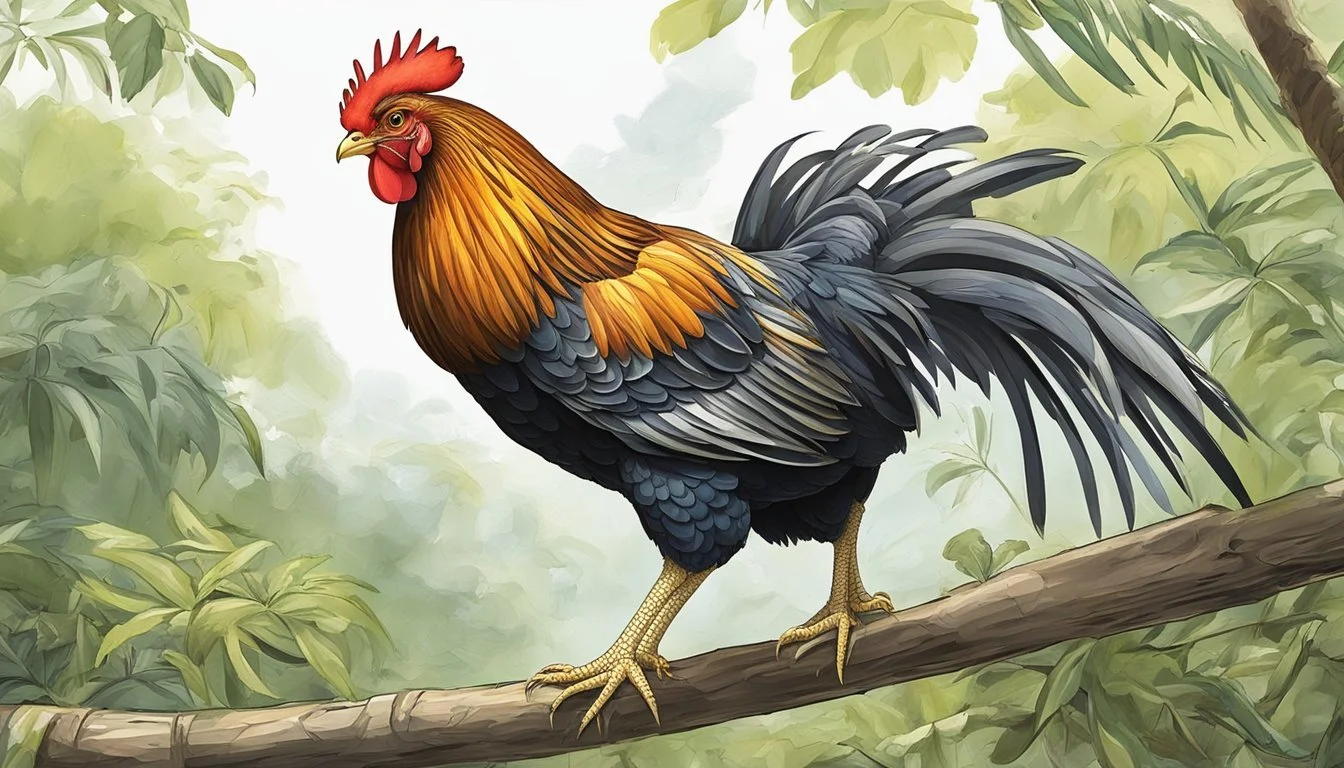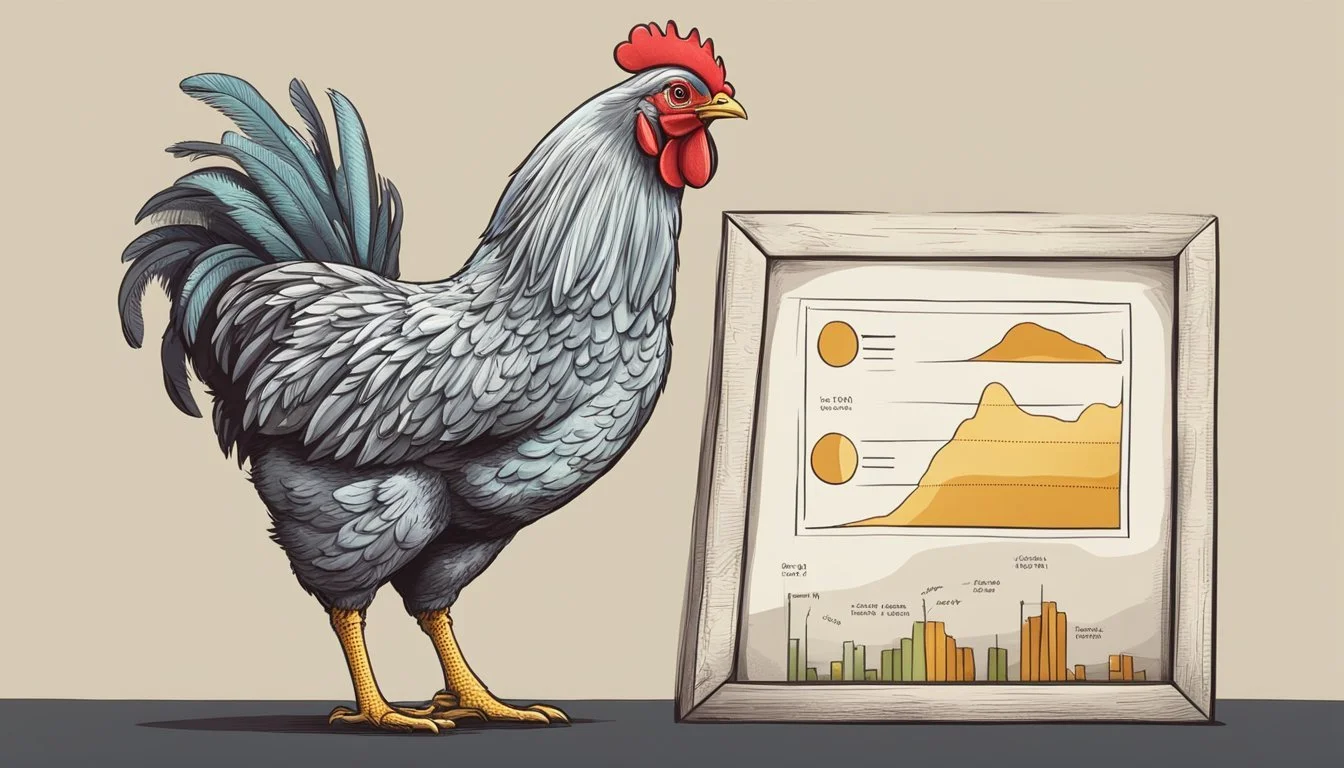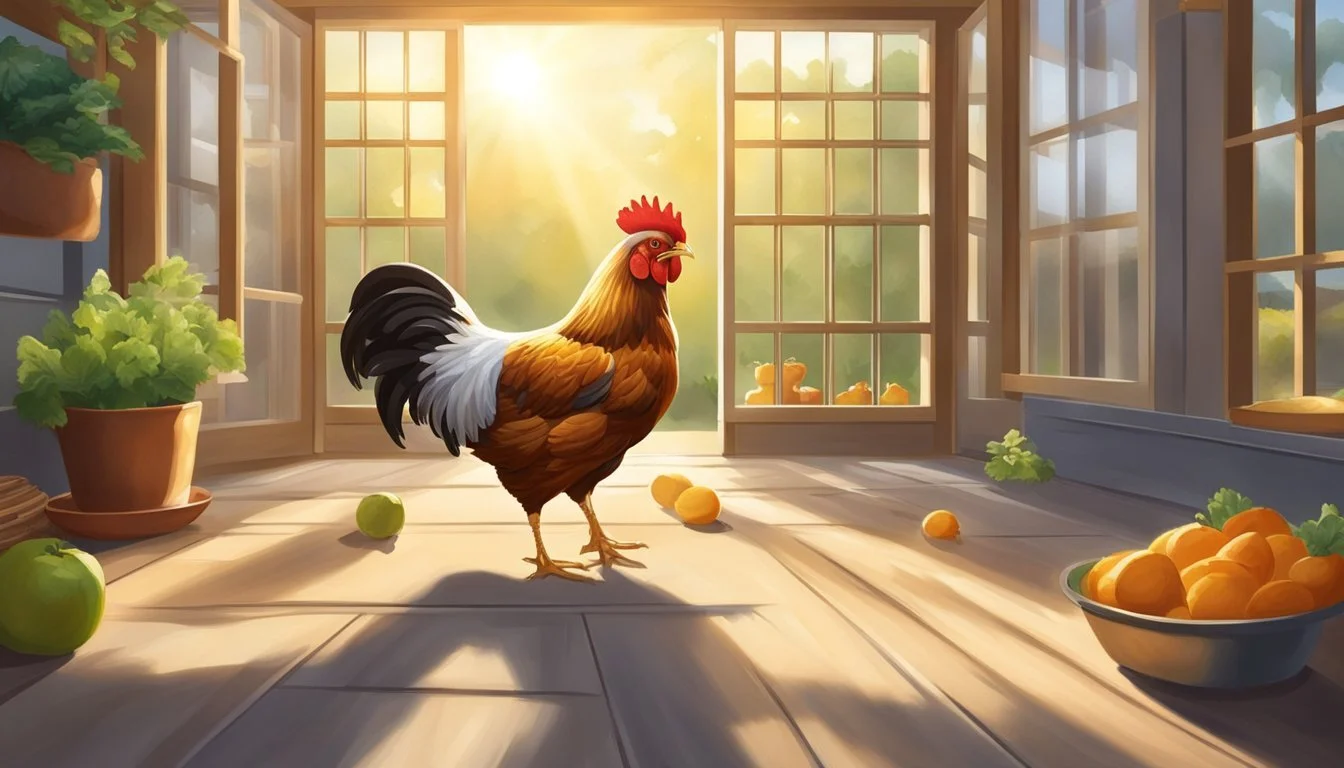What is the Average Lifespan of a Chicken?
Understanding Poultry Longevity
The average lifespan of a chicken fundamentally depends on the breed and the conditions under which it is raised. In general terms, chickens can live anywhere from three to ten years. Production breeds, which are primarily raised for egg laying and grow quickly, tend to have shorter lifespans, usually around 3-5 years. On the other hand, heritage breeds, which are not bred for intensive production, often have longer lifespans, with some living on average up to 8 years or more.
Factors such as diet, environment, and healthcare can also significantly impact a chicken's life expectancy. Chickens raised in backyard settings with good care, for instance, can live between five to ten years, with some exceptional cases reaching up to sixteen years. Across various breeds and rearing practices, it remains clear that providing chickens with a safe living space, protection from predators, and proper nutrition can help extend their lives.
Understanding the life expectancy of chickens is crucial for anyone considering raising these animals. Recognizing the needs of different chicken breeds and their natural life spans ensures that individuals who raise chickens can provide appropriate care and set realistic expectations for their flocks. With careful management, many chickens can enjoy a full and productive lifespan that benefits both the chickens and their keepers.
Fundamentals of Chicken Lifespan
The lifespan of chickens varies greatly depending on factors such as genetics and the specific breed in question. To understand the life expectancy of these birds, it is essential to explore how these elements influence their longevity.
Genetics and Breeding
Genetics play a crucial role in determining the lifespan of chickens. Heritage breeds, which are closer to the original wild species, tend to have a longer lifespan compared to hybrid chickens. Hybrids, like the ISA Brown and the Cornish Rock, are bred for specific purposes, such as egg laying or meat production, which can impact their overall health and longevity. Heritage chickens are known for being hardier with a life expectancy that can range from 5 to 8 years, while hybrids may have a shorter lifespan due to the intensive breeding practices employed to enhance certain traits for commercial gain.
Common Chicken Breeds and Their Lifespans
Different chicken breeds can have vastly different life expectancies. Here is a brief overview of common breeds and their average lifespans:
Rhode Island Red: Recognized for their hardiness and ability to lay eggs prolifically, these birds typically live 5 to 8 years.
Wyandotte: A well-rounded breed suitable for egg production and meat, with a lifespan of 6 to 12 years.
Orpington: Known for their docility and ability to adapt to various climates, Orpington chickens can live between 8 to 10 years under good care.
Plymouth Rock: They are robust and adept at evading predators crucial for longevity, with life expectancies of 6 to 10 years.
Silkie: Renowned for their unique feathers, Silkies are often kept as ornamental birds and can live 7 to 9 years.
Leghorn: While champion egg layers, they have a moderate lifespan of around 4 to 6 years.
Australorp: These efficient layers are also durable, often living 6 to 9 years.
Cochin: With their distinctive fluffy feathers, Cochin bantams usually enjoy a lifespan of 5 to 8 years.
Bantams, miniature versions of standard chickens, can have longer lifespans due to less strain on their bodies; however, this can vary widely between the sub-breeds. Broiler chickens, such as the White Broiler or Cornish Rock, are bred specifically for meat production and typically live around 6 weeks to 14 weeks before they are processed, reflecting a significantly shorter lifespan due to their rapid growth rates.
Care and Management for Longevity
To ensure chickens lead healthy and long lives, the focus on proper care and management is essential. Key aspects such as nutrition, housing, and healthcare play pivotal roles in longevity.
Optimal Nutrition and Diet
Chickens require a balanced diet rich in protein and essential nutrients to thrive. Owners should provide a variety of foods that cater to the chickens' life stages:
Chicks: High-protein starter feed
Laying hens: Layer feed with calcium for egg production
General nutrition: A mix of grains, seeds, and kitchen scraps to diversify their diet
Regular access to fresh water and grit is also crucial for digestion and hydration.
Housing and Space Requirements
Adequate housing is vital for chicken welfare and longevity. The coop must be:
Spacious: Provide at least 3-4 square feet per chicken inside the coop and 8-10 square feet in the run.
Well-ventilated: Proper ventilation reduces respiratory issues and moisture build-up.
Secure: Protection from predators with sturdy construction and secure latches.
Maintaining clean living conditions with regular coop cleaning schedules will minimize disease risks.
Routine Veterinary Care and Disease Prevention
Veterinary care is not only about treating ailments but also about preventing them:
Regular check-ups: These help spot and treat issues before they become severe.
Vaccinations: Essential for preventing common infectious diseases.
Parasite control: Implement a treatment plan for external and internal parasites.
Managing stress levels and observing any behavioral changes can be indicative of health issues that require immediate attention.
Health Challenges and Disease Impact
Chickens can face a variety of health challenges that impact their longevity, ranging from invasive parasites to chronic diseases. Maintaining optimal health is crucial for chickens to reach their potential lifespan.
Common Diseases in Chickens
Chickens are susceptible to several diseases that can significantly reduce their lifespan. Avian influenza is a highly contagious viral infection that can lead to severe respiratory distress and high mortality rates. Chronic diseases, such as reproductive tumors and Egg Yolk Peritonitis, primarily affect laying hens and can lead to a decrease in egg production as well as posing serious health risks. Marek’s Disease is another viral disease that can cause tumors and paralysis, potentially resulting in premature death if not properly managed.
Parasites and Pests
Parasites and pests present an ongoing threat to chicken health. External parasites like mites and lice can cause skin irritation, feather loss, and anemia. Internal parasites, such as worms, may lead to malnutrition and weakened immune systems, making chickens more vulnerable to other diseases. Regular inspection and appropriate treatment are essential to control these pests and safeguard the well-being of the flock.
Impact of Stress and Environment on Health
The physical and social environment has a profound impact on chicken health. Stressful conditions, including overcrowding and inadequate housing, can suppress the immune system, making chickens prone to infections and communicable diseases. Exposure to extreme temperatures and humidity levels, poor ventilation, and insufficient cleanliness also contribute to increased disease prevalence and compromised chicken longevity. Ensuring a well-managed living environment is crucial for preventing stress-related health issues in chickens.
Reproduction and Its Effects on Lifespan
Reproductive habits play a pivotal role in the lifespan of chickens. Hens, the females within the chicken species, begin egg production as early as six months of age. The laying period extends for several years, but as hens age, their egg production decline becomes evident.
Notably, production breeds, chickens bred specifically for the egg-laying industry, are often subjected to intense laying routines. This often leads to a shortened lifespan due to the physical demands placed on their reproductive system. Common health issues in these hens include reproductive tumors and egg yolk peritonitis, both of which can adversely affect longevity.
In addition, flock dynamics influence the stress levels and, consequently, the health and tenacity of hens. Stress impacts the hen's reproductive system and can alter egg laying capabilities. A well-managed flock with proper care often results in healthier birds with a more sustained egg-laying period.
The gender of the chicken also affects longevity. Males, or roosters, not being part of the egg-laying process, may experience different stressors that affect their lifespan. While a hen's reproductive capacity declines, leading to decreased egg production with age, these changes might contribute to a relative increase in longevity compared to their intensely-laid production counterparts, provided they do not suffer complications related to egg-laying.
In conclusion, the intersection of reproduction and lifespan in chickens is complex, influenced by various factors including breeds, care, and the inherent demands of egg production. While intelligence and tenacity are difficult to quantify in relation to lifespan, managing reproductive health and minimizing stress are key to enhancing the wellbeing and longevity of chickens.
Predator Defense and Survival
Chickens face various predation risks throughout their lifespan, and their ability to survive often hinges on the effectiveness of their defensive adaptations and behaviors.
Predation Risks
Chickens, whether backyard or free-range, can fall prey to a variety of predators including foxes, raccoons, hawks, and domestic dogs. The risk of predation escalates when chickens are allowed to roam freely without adequate shelter and protection. Predators often employ stealth and surprise, making backyard chicken coops and open free-range areas a target.
Defensive Adaptations and Behaviors
Chickens have evolved certain behaviors to protect themselves from predators. For instance, they display vigilance and alarming calls to alert others in the flock. The physical setup for protecting chickens plays a critical role, and this is where the provision of structurally sound shelters comes into focus. Properly constructed coops with reinforced wire mesh and secure locking mechanisms serve as the first line of defense.
Nighttime is particularly perilous, and ensuring chickens have a safe, predator-proof shelter to roost in is paramount. Strategies like elevated housing, motion-detecting lights, and guardian animals can enhance protection from predators. For those with free-range chickens, providing areas with cover where chickens can hide aids in evading aerial and ground predators.
Alternate Livelihoods: Meat and Egg Production
Chickens play a pivotal role in agricultural livelihoods, specifically through meat and egg production. This section elucidates the dichotomy between chickens raised for meat and those selectively bred for egg laying.
Broilers and Meat Chickens
Broilers, also known as meat chickens, are hybrid breeds, notably the Cornish Rocks, which are cultivated for their quick growth and substantial meat yield. These hybrids mature within a brisk timeframe, typically reaching market weight at about 5 to 7 weeks of age. Free-ranging and backyard chickens in this category can belong to various breeds but are often hardier and may grow at a slower pace than commercial broilers.
Egg Layers and Production
On the other hand, production breeds such as Rhode Island Reds and ISA Browns are prolific for their egg-laying capabilities. These hybrid hens are the cornerstone of the commercial egg layer industry. While highly efficient in production, these hens may face an egg production decline as they age, usually beginning after their first year. Many backyard chicken enthusiasts choose a free-range lifestyle for these chickens, which can extend their lifespan as compared to chickens in intensive production systems.
Wild Vs. Captivity: Comparative Lifespans
When discussing Gallus gallus domesticus, or commonly known as chickens, their lifespan can fluctuate markedly between wild environments and conditions of captivity.
In the wild, chickens face numerous threats that can reduce their life expectancy. Predation, disease, and competition for food are pervasive challenges that wild chickens live with daily. Due to these hardships, their longevity is usually compressed to just a few years, often no more than three to four.
On the other hand, chickens in captivity tend to have a substantially extended lifespan. This increase is attributed to protective shelter, regular access to food, and health care interventions. Here is how the two environments compare:
Wild chickens: 3-4 years
Chickens in captivity: 5-10 years
Chickens kept as part of a backyard chickens setup, akin to free-range conditions but with more protection, can experience the best of both worlds. They tend to enjoy the freedom to roam and exhibit natural behaviors while also benefiting from fewer environmental stressors. It is not uncommon for these have a life expectancy approaching the upper end of the captivity range.
It should be noted that longevity in captivity can vary with breed, care level, and purpose of raising the chickens. For example, layer hens may live longer than broilers because they are not bred for immediate meat production.
Careful management, irrespective of the setting, plays a crucial role in the overall life expectancy of chickens.
Influence of Selective Breeding on Lifespan
Selective breeding has significantly altered the lifespan of chickens, with a distinct divide observed between heritage and hybrid breeds. This section explores how the genetics and traits focused on during the selective breeding process affect the longevity of these birds.
Heritage Vs. Hybrid Breeds
Heritage breeds of chickens, as their name implies, have lineages that trace back further in history and are often bred for their ability to reproduce naturally. They typically exhibit longer lifespans, with many living 8-10 years, provided they receive proper care. The robust genetics of heritage chickens allow them to live closer to their wild ancestors, the junglefowl, which have an expected lifespan of 2-5 years. In contrast, hybrid chickens, which are selectively bred for specific commercial purposes such as egg laying or meat production, generally have shorter lifespans, averaging around 2-4 years.
Selective Breeding for Traits
Selective breeding in chickens prioritizes certain advantageous traits, such as rapid growth rates for broilers or high egg production for laying hens. While these traits are beneficial from a production standpoint, they can lead to a decrease in the overall lifespan of the selectively bred chickens. For instance, the rapid growth of broiler chickens—a result of selective breeding—has resulted in individuals that can reach more than nine pounds at 56 days old, but these birds may also suffer from health issues that can affect their longevity.
Selective breeding can both positively and negatively affect a chicken's genetic health and, thus, its lifespan. Managed breeding that focuses on health and vitality can enhance a breed's long-term survival, while breeding primarily for production traits may inadvertently shorten a bird's life expectancy through the introduction of health complications.
Practical Tips for Raising Long-Lived Chickens
When it comes to raising chickens with longevity in mind, several key factors contribute to their overall lifespan. Good care, appropriate housing, and a balanced diet are essential.
Housing: A well-constructed coop is crucial to protect chickens from predators and harsh weather. It should be spacious to prevent overcrowding and stress, and secure enough to keep wild animals at bay. Regular hygiene practices, such as cleaning out soiled bedding and providing fresh water, prevent disease outbreaks.
Space: Ample outdoor space allows chickens to engage in natural behaviors. Backyard chickens benefit from a free-range environment where they can forage, which improves their nutrition and reduces stress.
Diet: Feeding chickens a diet rich in protein and essential nutrients will support their health. Commercial feeds designed for each life stage can meet these needs; however, additional supplementation might be beneficial.
Protection from Predators: Since chickens are vulnerable to predation both in captivity and wild conditions, robust fencing and covered runs are vital. Deterrents such as guard animals can also be a part of the protection from predators strategy.
Veterinary Care: Regular check-ups from a vet ensure that any health issues are diagnosed and addressed promptly. Vaccinations and parasite control are integral parts of veterinary care.
Living Conditions: Factors like lighting, temperature, and social structure should be managed to create a stress-free environment. A peaceful flock without aggressive behaviors promotes better health and longevity.
By understanding and addressing these core aspects of raising chickens, keepers can improve the living conditions and extend the lives of their feathered pets.
Conclusion
The average lifespan of a chicken typically ranges between five and ten years. This longevity can be influenced by various factors including breed, living conditions, and healthcare. Heritage breeds are generally known to outlive hybrid chickens, which are often bred for high egg production.
Chickens of the Plymouth Rock variety, for instance, are known to have a longer lifespan, living 8 to 10 years on average. This is a considerable period, provided that they receive proper care and a suitable environment that promotes their well-being.
The life expectancy of a chicken in backyard settings may differ from those in commercial farms due to differences in stress levels and individual care. Chickens, like many other animals, thrive in environments where their nutritional, medical, and social needs are met.
On the other hand, chickens bred for high egg production may face health issues that can shorten their lifespan. Factors such as diet, predator protection, and space to roam are pivotal to the life span of these birds.
As a caretaker, it is crucial to understand these parameters that affect how long chickens live. Appropriate husbandry and vigilant care can maximize the lifespan of chickens, thus allowing them to live out their natural lives in contentment and good health.










